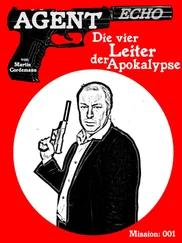Excitedly, Suzanne tapped in the two disparate names and she did a web search. But she came up with nothing. Undeterred, she did an image search. She was twenty pages in and about to call it quits when an old photograph appeared. It was an interior shot. It showed a line of men in dark suits and stiff collars being presented to a solid and charismatic figure with whom she had, in recent months, grown very familiar. She knew the location. She recognised the stately decor of one of the reception rooms at the Mansion House in Dublin. One of the men in the line was slender and blond and noticeably tall. She knew, without reading the picture caption, who that was, too.
There was someone else in the photograph, someone who competed even with Collins for attention. And it was not because she was the only woman in the frame. She was seated at a large upright manual typewriter. The bankers were to the left of Collins. She was to his rear and to their right. Collins was smiling genially at this gathering of American capital funds. The woman was looking straight at the camera. And the tall, blond man in the line of bankers was staring with a look of avarice at the typist.
Except that, for a typist, she wore an altogether disdainful look. Her dark hair was glossily bobbed. Under the fringe, her eyes had a feline, upward slant. She had sharp cheekbones and a mouth struggling not to smile at some secret, mutinous amusement. My God, she really does look just like me, Suzanne thought, who knew that her looks had intimidated more men than they had attracted before Martin had turned up, shining in his armour, his sword clanking in its scabbard as he played the goodly knight in her moment of peril on the East London Line.
She read the caption. It began: At the Mansion House in Dublin yesterday, Dáil Finance Minister Mr M. Collins meets New York Finance chiefs in a bid to drum up funds for the new Irish Free State .
The caption went on to name everyone present. Harry was still called Henry Spalding Jr then. He had not yet imposed his playboy persona on the world. He was not the easy, glamorous, Lost Generation self-invention he later became. He was thin and tall and slightly awkward. This picture had been taken before the maturing of Harry on his crossing aboard the Dark Echo from America to the Riviera. In this picture he was the youthful representative of a New York banking dynasty, a business apprentice with a distinguished war record. He had successfully shed the vulpine look of the Jericho Crew. But he had not yet really grown into himself. He had yet to develop his tan. And there was nothing louche or bohemian about him. He was still, in modern parlance, what is disparagingly referred to as a suit.
What about the woman? What about the sepia mirror image Suzanne had found herself staring at? She was an afterthought for the subeditor who had compiled the photo caption. But they were nothing if not punctilious, in those great days of hot metal in the print room and five or six editions a day rolling off the presses on to the streets.
Also pictured, extreme right, Miss Jane Boyte.
Jane wore a white, high-buttoned blouse with three-quarter sleeves that revealed a wristwatch. Suzanne thought it still unusual for a woman to wear a wristwatch in that period. It would be considered a rather masculine affectation. In the decade to come, the likes of Amelia Earhart might buckle one on. But she was an exception in the late 1920s. And this was still only 1919. Ladies were not expected to need to be accurate timekeepers then. And Jane was a lady. She was not some clerical skivvy. Her father was a prosperous boatbuilder with his own dock in Liverpool Harbour. Jane’s status was obvious from her expensive and fashionable haircut, from the rope of black pearls around the high collar of her tailored blouse and from her general hauteur. It was gratifying to see the large ashtray on her desk, black glass with crenellations like the tower of a castle, Suzanne thought. Her own ashtray was a little pressed foil dish that sat on the study window sill. Hers was an apology. Jane’s was a grand statement of intent. That too, though, challenged convention. Ladies smoked in 1919. But they rarely did so in public.
The biggest clue to Jane Boyte’s position in the ruling mechanism of the Irish Free State was that she was in the photograph at all. Since she wasn’t central to proceedings, was literally on the edge of the picture, it would be the logical thing for a picture editor to crop her out. A secretary would certainly have been cropped out. Jane had survived because of her status. Her presence here was the proof of that status. Her evident and brazenly public commitment to the Fenian cause made her later arrest in Liverpool much less of a mystery in Suzanne’s mind, too. But the significant thing here was that she was the link between Harry Spalding and Michael Collins.
Suzanne was about to tap Jane Boyte’s name into her search engine when the phone on the desk began to ring. It was Monsignor Delaunay, the Jesuit priest whom she had never met but of whom Martin had spoken fondly and often. Martin always described him as jocular, a sort of jolly giant of the priesthood. He did not sound jocular now, though. He sounded guarded, suspicious. But at least he had returned the call. She thanked him for doing so. She apologised for cold-calling him out of nowhere, for interrupting his hike on the slopes of the mountain, his dip in the Barmouth sea.
‘It’s quite alright,’ he said, in a tone that suggested it was anything but. ‘I was expecting you to call.’
‘Really?
‘I had resolved that, if you did, I would meet you and speak to you. You are concerned about the Peitersen business. You are worried about the deception. You believe the deception might place Martin and his father in jeopardy aboard the boat.’
‘Does it?’
At the other end of the line, there was a pause. ‘Not directly, it doesn’t. But Magnus Stannard is owed an explanation concerning the Peitersen farrago. All three of you are, since all three of you were deceived.’
‘I wasn’t deceived for long,’ Suzanne said.
‘Nevertheless. You are owed an explanation. And I believe you are owed an apology. And I would prefer to offer both in person.’
After concluding her conversation with Delaunay, she did her search for Jane Boyte. She found nothing written. But she did find another photograph. This one was in an archive copyrighted by Sefton Metropolitan Borough Council and the sub-classification under which it was filed was Southport Tourism (Heritage). It showed two men wearing leather coats and gauntlets, standing next to a biplane on an expanse of hard sand. One of them wore a cap with goggles perched above the peak. The picture had been taken on a sunny, windy day. The detail in the shot was good, the contrast very sharp. Between the grinning flyers stood Jane Boyte. If anything she had grown into herself since the Dublin picture. Her precisely cut hair was raven black in strong, breeze-blown tresses. She wore a leather jacket, tightly cinched by a tied belt at the waist. The calf-length boots under her canvas jodhpurs buttoned all the way up the front. She was smiling, and her teeth were very white.
Suzanne whistled. It was a bit like discovering you had been a film star in a former life. The resemblance was so undeniably strong it almost made her laugh out loud. It did actually make her blush. The difference was the glamour. Jane Boyte was possessed of a swaggering sexual glamour that programme researchers employed on a freelance contract by the BBC in the early twenty-first century were generally and probably understandably denied. She felt a stab of something and, assuming it was hunger, looked at her watch. It was just after twelve thirty. But it wasn’t a hunger pang at all, she realised. It was the feeling of envy.
Читать дальше












